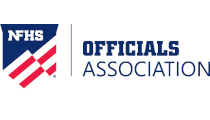Setting Up an Officials Mentor Program is as Easy as 1-2-3
By Ivan Cardona on July 19, 2017 officials Print
If your officials’ association is interested in developing a formal mentoring program, but the state association doesn’t offer guidance, it isn’t time to panic. Instead, try following these steps in the creation of a mentorship for your association to utilize for seasons to come.
In creating a mentorship program, I did so with three things in mind: Setting the Stage, Process and Resources.
- Setting the Stage – Create a mission, objectives and roles for both mentor and mentee.
- Process – Setting guidelines, establishing framework and mapping out the steps.
- Resources – Identifying tools to achieve your mentorship goals. (There is no need to reinvent the wheel!)
This creation and implementation begins with someone that is willing to step up, someone that recognizes, either individually or as a board of directors that there is a need for a mentorship program, especially if the state association does not offer one. Most importantly, the program is going to rely on strong mentors. They are the foundation of any kind of success you hope for your mentorship program.
Core characteristics are crucial to your leaders and mentors. Mentors must commit sufficient time to share their knowledge, teach skills and assist. They should also have an interest in facilitating personal development. In the end, the goal is to provide honest feedback, understanding strengths and weaknesses and going at the pace of the mentee.
The mentors’ mindset is crucial in this process. They are in the role of teacher, supporter and evaluator. They help guide the mentee to learn about the business and its offerings, explain process, help train, correct or redirect inappropriate actions. For example, as supporters, a mentor assists in the transition from a two person or three person officiating system in basketball. They do so with patience and encouragement.
That’s the program, the nuts and bolts, if you will. The overall goals of the mentorship program are to: Develop as people and officials; Increase morale, and Increase retention.
Here are steps to follow:
- Identify a leader to head the mentorship program in your local association, some that can relate to multiple generations, i.e., new officials, old school.
- Develop your blueprint.
- Call for mentor applications once a year. Complete application forms.
- Association members are notified of their mentor-mentee match.
- Match mentees and mentors.
- Mentors and mentees meet regularly throughout the season. Finding a balance in the relationship is key. Encourage meeting, but just the right amount, either via phone, watching, email, studying tape, meeting for coffee, etc.
- Urge a midseason check-in with a face-to-face meeting.
- Mentors and mentees continue to meet.
- Mentorship program concludes at the end of the season. Asking for honest feedback and an assessment of the season are keys.
- Reflect and evaluate to improve.
In this era of struggling to recruit and retain officials, establishing a mentorship program is a significant step in strengthening the officiating avocation.
Ivan Cardona
Ivan Cardona is a Twin Cities-based football and basketball official at the high school and college levels. He oversees the mentorship programs for Minneapolis Officials Association and the 2019 Minneapolis Final ® Local Organizing Committee.
Most Recent Articles
- nfhs news NFHS Celebrates National Girls and Women in Sports Day
- nfhs news NFHS Learning Center Delivers 25 Millionth Course
- Track & Field/Cross Country article Effective Communication with Athletes and Coaches
- nfhs news Player Equipment Changes Highlight 2025 High School Football Rules Revisions
- Player Equipment Changes Highlight 2025 High School Football Rules Revisions






